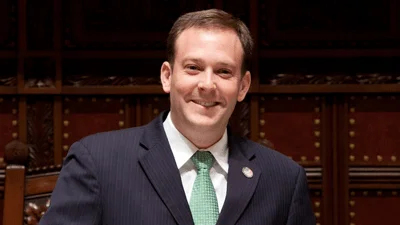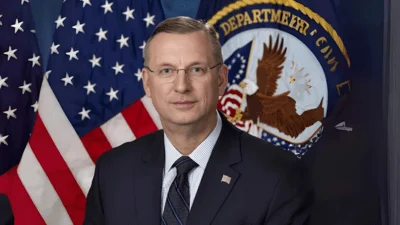The Congressional Record is a unique source of public documentation. It started in 1873, documenting nearly all the major and minor policies being discussed and debated.
“INFRASTRUCTURE” mentioning the U.S. Dept. of Transportation was published in the in the Senate section section on pages S751-S752 on March 9.
The Department handles nearly all infrastructure crisscrossing the country. Downsizing the Federal Government, a project aimed at lowering taxes and boosting federal efficiency, said the Department should be privatized to save money, reduce congestion and spur innovation.
The publication is reproduced in full below:
INFRASTRUCTURE
Mr. CARDIN. Madam President, so many cities and towns across America have the story of a segment of highway or a railroad track that cuts ruthlessly through neighborhoods. These neighborhoods may not have been affluent, but they supported vibrant, tight-knit, supportive communities with cherished homes, schools, and small businesses.
Backed with Federal funding, these highways and other massive infrastructure projects tore these neighborhoods apart and left them an enduring legacy of exclusion and diminished opportunity. To be sure, these infrastructure projects were intended to serve a purpose, and they did serve a purpose--transportation, of a particular sort. For families who could afford a car and a house in the suburbs, highways were built to whisk people in and out of our urban downtowns, without regard for the people and the communities remaining in those downtowns.
In the most benign cases, these projects were designed without care or sensitivity to the people they left behind and excluded. In the worst cases, the outcome of suppression and exclusion of people of color was, in fact, deliberate.
It is time to confront our legacy of racism and exclusion in infrastructure development and promote the next generation of infrastructure that heals, unifies, and reconnects--an infrastructure of inclusion, not division.
Thankfully, under President Biden's leadership and the direction of Congress, we are doing just that. President Biden has affirmed and reaffirmed his commitment to advancing equity and combating systemic racism through two Executive orders.
The first Executive order, which was signed on the first day in his office, said:
The Federal Government should pursue a comprehensive approach to advancing equity for all, including people of color and others who have been historically underserved, marginalized, and adversely affected by persistent poverty and inequality. Affirmatively advancing equity, civil rights, racial justice, and equal opportunity is the responsibility of the whole of our Government.
The Executive order he signed just last month acknowledges that we have so much work to do. It says:
[M]embers of underserved communities--many of whom have endured generations of discrimination and disinvestment-- still confront significant barriers to realizing the full promise of our great Nation, and the Federal Government has a responsibility to remove these barriers.
How to remove these barriers.
These barriers exist in a metaphoric sense, but sometimes they are concrete--literally. Baltimore City has dealt with the enduring legacy of its own ``highway to nowhere.'' This project is on the Franklin-
Mulberry corridor in West Baltimore. It started as a way to get drivers out of the city quickly. Although the city never completed the project, a 1.4-mile stretch of highway contained within a concrete canyon was built and did irreparable harm to the surrounding communities: 971 homes and 61 businesses were destroyed. The project displaced approximately 1,500 people, most of them Black. And for decades, the city has lived with this eyesore and barrier to growth, opportunity, and connection.
Let me be clear. Removing barriers like highways is not simply about demolishing or removing infrastructure; it is about building the kind of infrastructure our cities and communities need--the infrastructure of connectivity and inclusion.
This means that instead of a highway for fast moving cars--or worse, an unused highway--in the case of Baltimore's ``highway to nowhere,'' we need to restore neighborhood street grids, parks, sidewalks, and bike trails--the infrastructure we need to reconnect people with opportunities, with businesses, with education, and with healthcare.
I am proud that under President Biden's leadership on equity and the surface transportation title of the bipartisan infrastructure law that the Committee on Environment and Public Works negotiated, we now have a Federal program specifically aimed at addressing the legacy of division and exclusion from past infrastructure projects and supporting a new and better future for hurt and marginalized communities. The Surface Transportation Reauthorization Act, which the Environment and Public Works Committee reported unanimously in May of 2021, includes the Reconnecting Communities Program, later included in the final Infrastructure Investment and Jobs Act.
I might say I am proud of the role that our Presiding Officer played in the development of that law, the infrastructure law, as well as Reconnecting Communities. I was proud to serve on the committee with our Presiding Officer, and we are pleased to be an integral part in making sure that legislation got to the President's desk.
When we were negotiating the surface transportation reauthorization bill, it was not easy to convince everyone that this would be a worthy program. But just look at the overwhelming need across the country and the expressions of interest in the first round of grant awards--more than 350 applications nationwide--that far outpaced the amount of funding available.
There are so many worthy projects across the country. They never received enough planning and consideration through the Federal policy framework that existed prior to President Biden's focus on equity, the bipartisan infrastructure bill, and Reconnecting Communities.
I think the overwhelming need we are seeing across the country will strongly support the program's continuation and expansion into one of the U.S. Department of Transportation's signature initiatives.
Last month, after all the work of developing legislation and enacting it into law and standing up the program, the Department of Transportation awarded the very first round of Reconnecting Communities grants.
I am proud that after all the work on the bipartisan infrastructure law, Baltimore City was one of the first recipients of the Federal funding under the Reconnecting Communities Program. Baltimore will receive a $2 million grant for planning, to which the State of Maryland, under Governor Moore, is adding $400,000.
This funding is going to start an important process of planning and engagement with the people of Baltimore to develop a proposal, one that I hope will move forward in the coming years with Federal support for the construction of a project of great significance to Baltimore and its future.
This award for Baltimore and the establishment of the Reconnecting Communities Program is an important milestone in the history of our Nation's approach to infrastructure. For far too long, our national infrastructure policies contributed to tearing down communities while we built our transportation networks. With the Reconnecting Communities Program, our Federal infrastructure policy will no longer tear communities apart. Rather, it must build up, reconnect, and support them.
With that, Madam President, I yield the floor.
____________________




